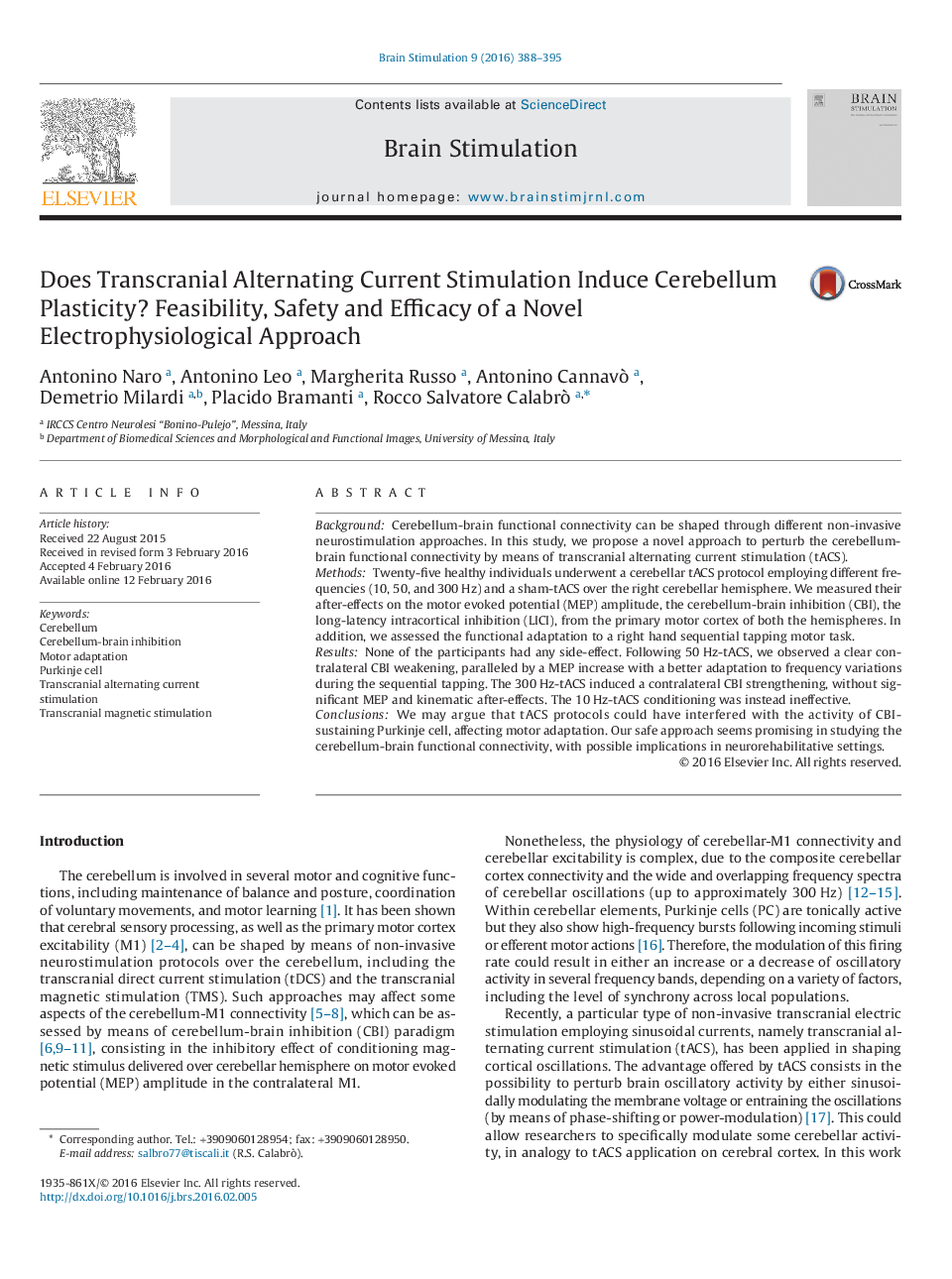| Article ID | Journal | Published Year | Pages | File Type |
|---|---|---|---|---|
| 6005438 | Brain Stimulation | 2016 | 8 Pages |
â¢Cerebellar tACS can induce significant cortical excitability and behavioral changes.â¢Cerebellar tACS is a novel and safe approach for investigating the complex cerebellar-M1 connectivity.â¢Our tACS protocol could be useful in neurorehabilitation settings.
BackgroundCerebellum-brain functional connectivity can be shaped through different non-invasive neurostimulation approaches. In this study, we propose a novel approach to perturb the cerebellum-brain functional connectivity by means of transcranial alternating current stimulation (tACS).MethodsTwenty-five healthy individuals underwent a cerebellar tACS protocol employing different frequencies (10, 50, and 300âHz) and a sham-tACS over the right cerebellar hemisphere. We measured their after-effects on the motor evoked potential (MEP) amplitude, the cerebellum-brain inhibition (CBI), the long-latency intracortical inhibition (LICI), from the primary motor cortex of both the hemispheres. In addition, we assessed the functional adaptation to a right hand sequential tapping motor task.ResultsNone of the participants had any side-effect. Following 50âHz-tACS, we observed a clear contralateral CBI weakening, paralleled by a MEP increase with a better adaptation to frequency variations during the sequential tapping. The 300âHz-tACS induced a contralateral CBI strengthening, without significant MEP and kinematic after-effects. The 10âHz-tACS conditioning was instead ineffective.ConclusionsWe may argue that tACS protocols could have interfered with the activity of CBI-sustaining Purkinje cell, affecting motor adaptation. Our safe approach seems promising in studying the cerebellum-brain functional connectivity, with possible implications in neurorehabilitative settings.
